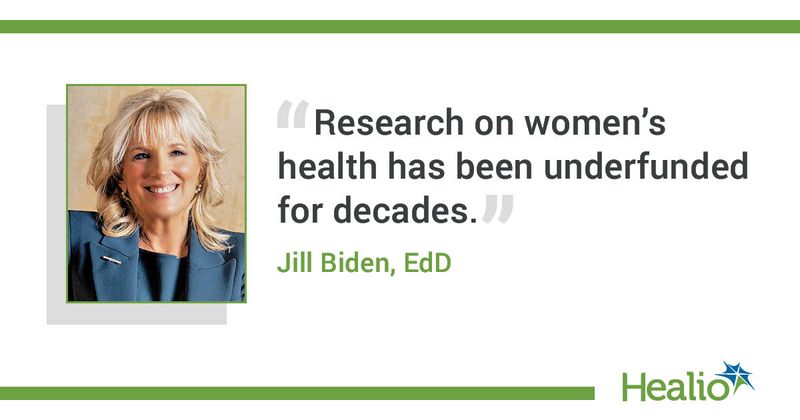White House announces initiative to improve women’s health research
Click Here to Manage Email Alerts
Key takeaways:
- The White House Initiative on Women’s Health Research will increase funding and approaches to women’s health.
- The initiative aims to address gaps in women’s health knowledge by expanding research funding.
Aiming to address health disparities and inequities, the Biden administration announced the first-ever White House initiative to improve the way the United States approaches and funds women’s health research.
The effort will be led by first lady Jill Biden, EdD, and the White House Gender Policy Council. The initiative will be chaired by Carolyn M. Mazure, PhD, founder and director of Yale School of Medicine’s Women’s Health Research, the Norma Weinberg Spungen and Joan Lebson Bildner Professor in Women’s Health Research and professor of psychiatry and psychology at Yale University.

“I have always believed in the power of research to save lives and to ensure that Americans get the high-quality health care they need. To achieve scientific breakthroughs and strengthen our ability to prevent, detect and treat diseases, we have to be bold,” President Joe Biden said in a related press release. “That’s why we’re establishing a new White House Initiative on Women’s Health Research so that my administration — from the National Institutes of Health to the Department of Defense — does everything we can to drive innovation in women’s health and close research gaps.”
The White House Initiative on Women’s Health Research aims to address gaps in women’s health knowledge, including diseases and conditions most prevalent among women and health conditions linked to women’s perimenopausal and menopausal years. Members of the initiative will include heads of federal agencies and White House offices.
The initiative will:
- assess the federal research landscape to identify opportunities for investments to address women’s health needs, set initiative-wide priorities guiding research investments and improve agency and office coordination in pursuing women’s health research;
- develop policy recommendations and form targeted recommendations to address disparities and inequities in women’s health and support translating research advancements to benefit patients and providers;
- identify opportunities for public-private partnerships and engage scientific and research communities;
- assess opportunities to recruit, train and support women pursuing careers in health and biomedical research; and
- identify public awareness of the need for greater funding and attention to women’s health research and outcomes.
Within 45 days, the White House Initiative on Women’s Health Research will recommend actions for the Biden-Harris administration to improve how women’s health research is conducted and to maximize investments to address health disparities and inequities.
“Research on women’s health has been underfunded for decades, and many conditions that mostly or only affect women, or affect women differently, have received little to no attention. Because of these gaps, we know far too little about how to manage and treat conditions like endometriosis, and autoimmune diseases like rheumatoid arthritis,” Jill Biden said during a press call. “These gaps are even greater for communities that have historically been excluded from research — including women of color and women with disabilities.”
Reference:
- Memorandum on the White House Initiative on Women’s Health Research. https://www.whitehouse.gov/briefing-room/presidential-actions/2023/11/13/memorandum-on-the-white-house-initiative-on-womens-health-research/. Published Nov. 13, 2023. Accessed Nov. 14, 2023.
- Remarks as Prepared for Delivery by First Lady Jill Biden on a Press Call Announcing White House Initiative on Women’s Health Research. https://www.whitehouse.gov/briefing-room/speeches-remarks/2023/11/13/remarks-as-prepared-for-delivery-by-first-lady-jill-biden-on-a-press-call-announcing-white-house-initiative-on-womens-health-research/. Published Nov. 13, 2023. Accessed Nov. 14, 2023.
